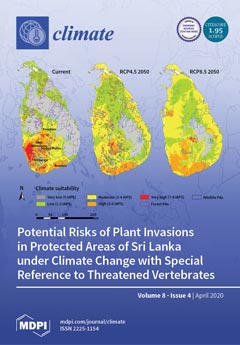Open AccessArticle
Adaptation of Mediterranean Olive Groves to Climate Change through Sustainable Cultivation Practices
by
G. Michalopoulos, K. A. Kasapi, G. Koubouris, G. Psarras, G. Arampatzis, E. Hatzigiannakis, V. Kavvadias, C. Xiloyannis, G. Montanaro, S. Malliaraki, A. Angelaki, C. Manolaraki, G. Giakoumaki, S. Reppas, N. Kourgialas and G. Kokkinos
Cited by 42 | Viewed by 7345
Abstract
Olive cultivation is considered as one of the most significant agricultural activities in Greece, from a financial, social, and ecological point of view. Intensive cultivation practices in combination with the Mediterranean climate, lead to depletion of soil organic matter, erosion, desertification, and degradation
[...] Read more.
Olive cultivation is considered as one of the most significant agricultural activities in Greece, from a financial, social, and ecological point of view. Intensive cultivation practices in combination with the Mediterranean climate, lead to depletion of soil organic matter, erosion, desertification, and degradation of water resources. This paper describes sustainable olive crop management practices that were comparatively applied in 120 olive groves in Greece for 5 years with the participation of three farmers groups. Organic materials recycled in the olive groves during the present study were valuable sources of carbon, nitrogen, phosphorus, and potassium. Carbon content was highest in pruning residue (53.8–54.2%) while all materials studied were considered rich in C ranging between 41.9–46.2% (compost) and 34.9–42.5% (three-phase olive mill waste-OMW). The highest content in nitrogen was detected in compost (2–2.45%) followed by pruning residue (0.93–0.99%) and OMW (0.03–0.1%). Compost was considered a good source of phosphorus (0.3–0.6%) followed by pruning residue (0.08–0.13%) and OMW (0.01–0.3%). Potassium was also considerable in the organic materials recycled ranging 0.5–1.5% in compost followed by pruning residue (0.5–0.7%) and OMW (0.3–1.1%). Adoption of modified pruning also had important contribution toward sustainable management of olive trees. Sustainable pruning resulted in a well-balanced ratio between vegetative growth and fruiting (balanced, every year, in order to eradicate biennial bearing). Significant fluctuation in olive yields was observed in the first years of the project while yields were gradually stabilised by applying sustainable crop management. In parallel, yield increase without additional inputs, lowers the carbon—environmental footprint of the product regarding several environmental impact categories. Results can be integrated in the national agricultural and environmental policy in Mediterranean countries toward the achievement of a circular economy.
Full article
►▼
Show Figures





